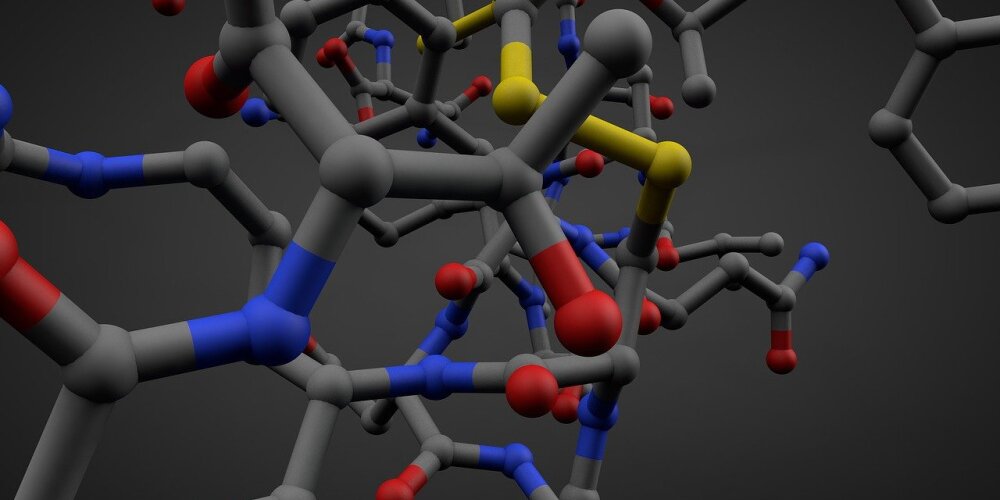Scientists Uncover New Way to Make Polymers Stronger

A team of scientists from MIT and Duke University have discovered a counterintuitive way to make polymers stronger; by introducing weaker bonds into the material.
The scientists made the discovery when working with a type of polymer known as polyacrylate elastomers. Polyacrylate elastomers are polymer networks that are made from strands of acrylate held together by ‘linking molecules’.
These strands of acrylate and linking molecules are effectively ‘building blocks’ which can be joined together in different ways to create materials with different properties.
In many traditional polymer architectures, the linking molecules are situated at the ends of each strand of acrylate polymer to create a cohesive material (when connected together they resemble something akin to a football net). However, the scientists decided to use the linking molecules in a different way.
Rather than joining acrylate strands together at the ends, they instead used the linking molecules to join the acrylate strands in random locations across each strand. This created a far less linear and uniform pattern than the ‘end linking’ method described above.
This discovery allowed the scientists to make a counterintuitive breakthrough. By building polymers in this way, they could use weaker linking molecules to create a material that is stronger.
At this point you may be getting a sore head - and we wouldn’t blame you. But, bear with us.
By using weaker linking molecules to build polymer architectures, the scientists found that the resulting polymer was much harder to break.
Why? It goes something like this (as per a statement via MIT):
‘The weaker bonds are randomly distributed as junctions between otherwise strong strands throughout the material, instead of being part of the ultimate strands themselves. When this material is stretched to breaking point, any cracks propagating through the material try to avoid the stronger bonds and go through the weaker bonds instead. This means the crack has to break more bonds than if it would if all the bonds were the same strength’ (emphasis ours).
As Jeremiah Johnson, a professor of chemistry at MIT and one of the scientists involved in the discovery adroitly summed it up:
“Even though those bonds are weaker, more of them end up needing to be broken, because the crack takes a path through the weakest bonds, which ends up being a longer path”.
To give you an idea of how much stronger ‘weak linkers’ can make a material, consider the fact that the team found that polyacrylates that incorporate some weaker linkers are nine to 10 times harder to tear than polyacrylates made with stronger cross-linking molecules.
It’s a discovery which is likely to be warmly welcomed by materials scientists. Stephen Craig, a professor of chemistry at Duke University who was also involved in the work, explains:
“Polymer engineers know how to make materials tougher, but it invariably involves changing some other property of the material that you don’t want to change. Here, the toughness enhancement comes without any other significant change in physical properties - at least that we can measure - and it is brought about through the replacement of only a small fraction of the overall material”.
As with all such discoveries, the first question that generally crops up is - “what is the practical application of this?”
In this instance, the team believes that the discovery could be used to increase the strength and longevity of other materials such as rubber. “If you could make a rubber tire 10 times more resistant to tearing,” says Johnson, “that could have a dramatic impact on the lifetime of the tire and on the amount of microplastic waste that breaks off”.
“There’s a lot to explore here about what level of enhancement can be gained in other types of materials and how best to take advantage of it,” concludes Craig.
Materials science consultancy
Do you need to assess whether a material is suitable for use in a new product? Then The Lab’s team of material science experts can help.
Our team has extensive forensic investigation experience and has a wealth of analytical equipment at their disposal (such as a scanning electron microscope, differential scanning calorimetry etc).
Find out more about The Lab’s materials testing services now
For more materials science, materials testing and inspection news and insights, explore The Lab’s News and Knowledge Hub…
Researchers Design a New Class of Materials That Are Both Stiff and Shock Absorbing | Is It Possible to Create Carbon-Neutral Steel? | New 3D Printing Technique Developed to Print One of the World’s Toughest Steels
- Date
- 08/08/2023
